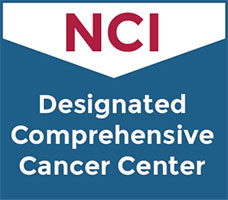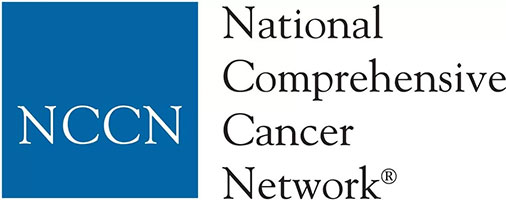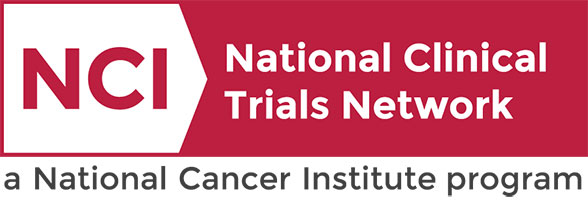Patient Search
 |
 |
|
KaCrole Higgins was diagnosed with breast cancer in 2020. “In May 2020, I found a lump in my breast. I cried. By June, it was diagnosed as breast cancer, triple positive, stage 1A. While getting this cancer diagnosis was devastating, it also became an opportunity. Suddenly, the cancer gave me clarity. It gave me clarity about what was important, what was good in my life, what was toxic in my life, and what I needed to do.” Click below to read more of KaCrole’s story |
If Landon Ryan had been diagnosed with bilateral retinoblastoma 10, 20 or 30 years ago, she might not be here today with nearly perfect vision.Thanks to recent improvements in the treatment for this rare form of cancer that almost exclusively affects children under the age of 5, the diagnosis had the power to change Landon’s life when she was 11 months old, but not to take it — or her eyesight. Click below to learn more about Landon and her story. https://momentum.vicc.org/2022/04/brighter-outlook/ |
Identifying Best Approach in Improving Quality of Life and Survival after a Donor Stem Cell Transplant in Older, Medically Infirm, or Frail Patients with Blood Diseases
Hematologic
Hematologic
This phase II/III trial studies the best approach in improving quality of life and survival after a donor stem cell transplant in older, weak, or frail patients with blood diseases. Patients who have undergone a transplant often experience increases in disease and death. One approach, supportive and palliative care (SPC), focuses on relieving symptoms of stress from serious illness and care through physical, cultural, psychological, social, spiritual, and ethical aspects. While a second approach, clinical management of comorbidities (CMC) focuses on managing multiple diseases, other than cancer, such as heart or lung diseases through physical exercise, strength training, stress reduction, medication management, dietary recommendations, and education. Giving SPC, CMC, or a combination of both may work better in improving quality of life and survival after a donor stem cell transplant compared to standard of care in patients with blood diseases.
Hematologic
II/III
Jayani, Reena
NCT03870750
VICC-IDCTT23500
Long-term Follow-up Study for Participants of Kite-Sponsored Interventional Studies Treated With Gene-Modified Cells
Multiple Cancer Types
The goal of this clinical study is to learn more about the long-term safety, effectiveness
and prolonged action of Kite study drugs, axicabtagene ciloleucel, brexucabtagene autoleucel,
KITE-222, KITE-363, KITE-439, KITE-585, and KITE-718, in participants of Kite-sponsored
interventional studies.
and prolonged action of Kite study drugs, axicabtagene ciloleucel, brexucabtagene autoleucel,
KITE-222, KITE-363, KITE-439, KITE-585, and KITE-718, in participants of Kite-sponsored
interventional studies.
Hematologic,
Leukemia,
Lymphoma,
Pediatric Leukemia,
Pediatric Lymphoma
N/A
Kassim, Adetola
NCT05041309
VICCCTT2170
Study of Selinexor in Combination With Ruxolitinib in Myelofibrosis
Multiple Cancer Types
This is a global, multicenter Phase 1/3 study to evaluate the efficacy and safety of
selinexor plus ruxolitinib in JAK inhibitor (JAKi) treatment-nave myelofibrosis (MF)
participants. The study will be conducted in two phases: Phase 1 (open-label) and Phase 3
(double-blind). Phase 1 (enrollment completed) was an open-label evaluation of the safety and
recommended dose (RD) of selinexor in combination with ruxolitinib and included a dose
escalation using a standard 3+3 design (Phase 1a) and a dose expansion part (Phase 1b). In
Phase 3, JAKi treatment-nave MF participants are enrolled in 2:1 ratio to receive the
combination therapy of selinexor + ruxolitinib or the combination of placebo + ruxolitinib.
selinexor plus ruxolitinib in JAK inhibitor (JAKi) treatment-nave myelofibrosis (MF)
participants. The study will be conducted in two phases: Phase 1 (open-label) and Phase 3
(double-blind). Phase 1 (enrollment completed) was an open-label evaluation of the safety and
recommended dose (RD) of selinexor in combination with ruxolitinib and included a dose
escalation using a standard 3+3 design (Phase 1a) and a dose expansion part (Phase 1b). In
Phase 3, JAKi treatment-nave MF participants are enrolled in 2:1 ratio to receive the
combination therapy of selinexor + ruxolitinib or the combination of placebo + ruxolitinib.
Hematologic,
Phase I
I/III
Mohan, Sanjay
NCT04562389
VICCHEMP2130


